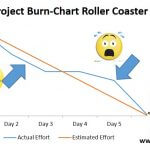In any project, it is important to have the correct mixture of team members to ensure that the project runs smoothly and efficiently. Agile teams can be small or large; however, they are all predominately comprised of five main roles. This article will look at the different roles within an agile team.
Scrum Master
Also referred to as the Project Facilitator, the Scrum Master is similar to a Project Manager. They are responsible for over-seeing the day-to-day running of the project, monitoring the Scrum board and ensuring that all tasks are on target.
The most effective Scrum Masters will have a high level of organisational influence, with the ability to make changes without gaining formal authority.
For more details take a look at Scrum Master Role article.
Project Sponsor
As with traditional projects, you need to have a project sponsor.
This is the person who wants the outcome from the project and is prepared to invest the required budget and resources. They will also be the point of escalation as and when challenges are identified that cannot be resolved by the project team.
You can find out more in the article Role of a Project Sponsor.
Product Owner
The Product Owner connects the customer, stakeholders and the Project Development Team, and bridges the gap between them.
They have a clear understanding of the customer’s needs and expert knowledge of the product. Sometimes referred to as a Customer Representative, the Product Owner works with the Development Team to ensure that they remain focussed on the process, and is responsible for being decisive and making important decisions.
For more details take a look at the Role of the Product Owner article.
Stakeholders
Stakeholders are any individuals or groups that have an interest in the project; they can include staff from other departments within the business, or external organisations. Despite not having overall responsibility, Stakeholders provide input into the project and are affected by its outcome.
In agile projects, Stakeholders provide regular support and feedback to both the Development Team and the Scrum Master. Without this, the project is unlikely to succeed.
You can find out more by visiting Role of Project Stakeholders.
Development Team Members
The development team have a hands-on role in creating the product; in other words, they are responsible for getting things done.
Each team member will bring different skills to the project; they may be engineers, designers, developers or copywriters amongst many other roles. Having a mixture of skills provides versatility to the project.
Learn more in the article, Role of Agile Development Team.
Agile Mentor
A mentor is invaluable for a team that is new to agile project management, or those that want to improve their performance. They will have extensive experience of implementing agile projects, which they can share with the team.
Mentors are not involved in the execution of the project, but are responsible for sharing their experience in applying the principles of agile project management and knowledge of the techniques used.
Fine out more, Role of Agile Mentor.
Team Characteristics
In addition to having the right team members, your team must also possess certain characteristics.
Ability to self-manage
Within a scrum team, each member is equally important; however, they have clearly defined responsibilities.
Each team member is able to voice an opinion, and is guided to a mutually agreed solution by the Scrum Master.
Closely located
The team should be located in the same room, to facilitate close-collaboration, and remove communication barriers. When teams are located in different rooms, places or even time zones, communication, and thus the project, can be subject to delays.
Focussed
Switching between projects and tasks is likely to cause a distraction, so team members should be assigned to the project on a full-time basis until its completion.
Dedication to a single project also allows team members to self-manage more effectively, taking ownership and responsibility for their tasks.
Cross functional
The team should have all of the knowledge needed to deliver the product. Although each team member has their own specialism, they should have some working knowledge of all of the other aspects of the process.
Established
Ideally, the project team should be kept together with limited changes. Learning to work together in Scrum teams takes time, and therefore projects will run more efficiently if there is a low turnover of staff.
Agile Team Members Presentation
Below is a quick guide presentation of the 6 key roles.
Agile Project Management Resources
If you would like more information, including a free Agile Burndown Chart template download, please visit the following related articles:






